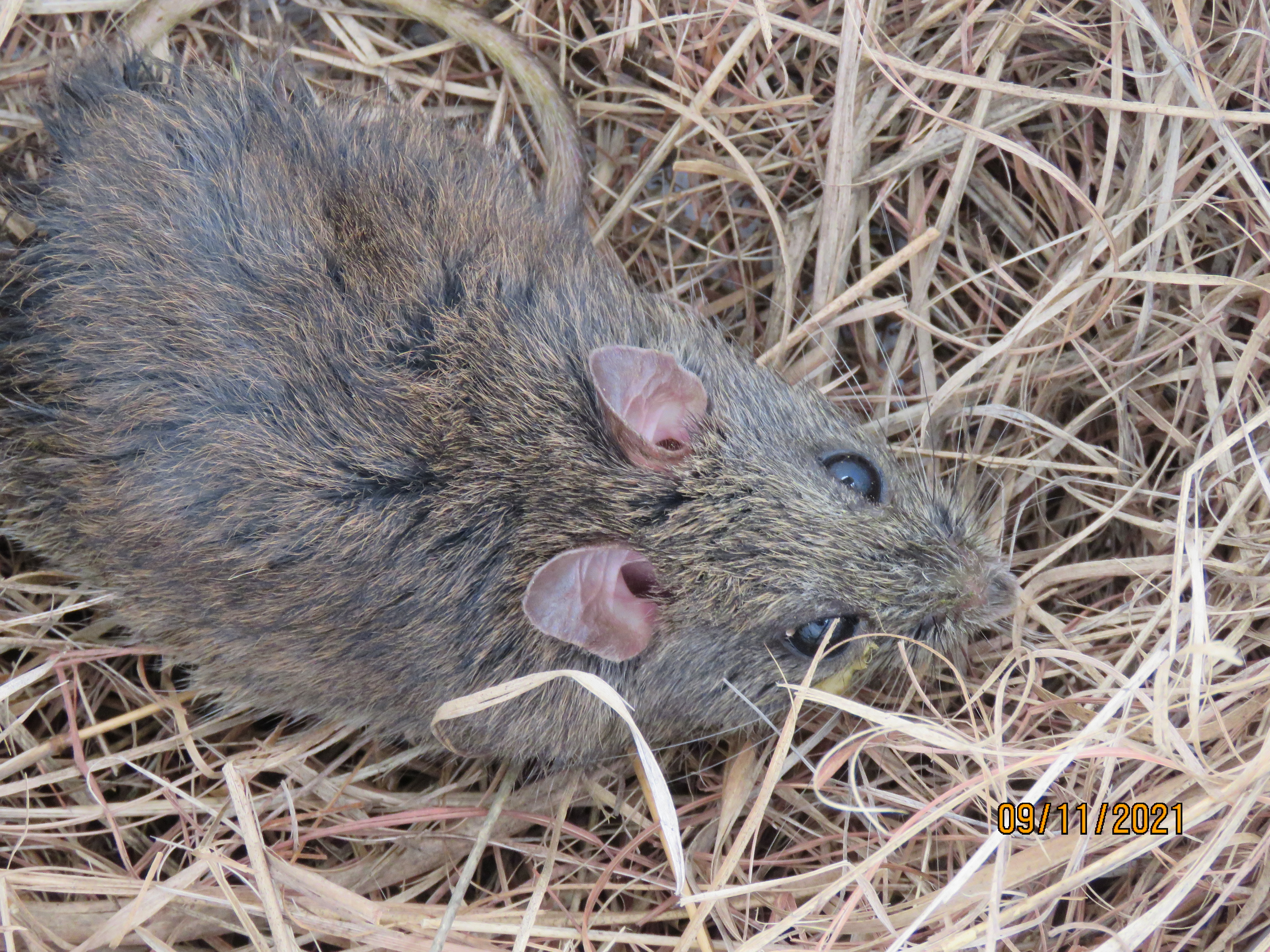Latest News
Rare mouse makes a comeback
Saturday, 11th December 2021

A healthy adult Hastings River mouse (Pseudomys oralis) was located recently during a small mammal survey near Mt Hyland in northern NSW by Hotspots Ecologist Kevin Taylor and Dr Sally Townley who studied the enigmatic native rodent for her doctoral thesis.
The Hastings River mouse is a small native rodent that is found between the Hunter Valley and the Qld border area. It is seldom found in large numbers and usually between 300 and 1000m elevation above seal level. Much of its ecological requirements are not well known but it seems to prefer grassy Wet Sclerophyll Forests between three to ten years since fire.
This Nationally Endangered species was first recorded at this property in 2012, as part of the Dundurrabin Hotspots workshop series when a targeted small mammal survey was undertaken at Motherland, the home of Rosemary Yates.
In 2019 the Bees Nest Fire impacted over 75% of the property, which supports extensive areas of Wet Sclerophyll Forest and Rainforests. A small army of volunteers worked day and night to contain the fire and mitigate its effects on over 27 threatened species known to inhabit the property.
In 2020 a WIRES – Landcare Wildlife Relief & Recovery Grant enabled a week of intensive fauna surveys to examine the fire’s impact on wildlife and also for post-fire erosion control measures to be undertaken. Surveys found the Vulnerable New Holland mouse (Pseudomys novaehollandiae), koalas (Phascolarctos cinereus), greater glider (Petauroides volans), yellow-bellied glider (Petaurus australis) but no Hastings River mouse. As elsewhere in eastern Australia, high numbers of feral house mouse (Mus musculus) were found in bushland areas where they had never been detected prior to the Black Summer.
The most recent survey recorded thirty-five bush rats, six swamp rats and one Hastings River mouse. In what is hoped will be a continuing trend, no feral house mouse were found. Extensive surveys for the Hastings River mouse across its range since the Black Summer have had very low rates of detection. It is thought that 80% of its habitat burnt in 2019-2020 so it was very exciting for the landowner and the team to find a population in the recent survey. For more information refer to https://www.environment.nsw.gov.au/threatenedspeciesapp/profile.aspx?id=10689